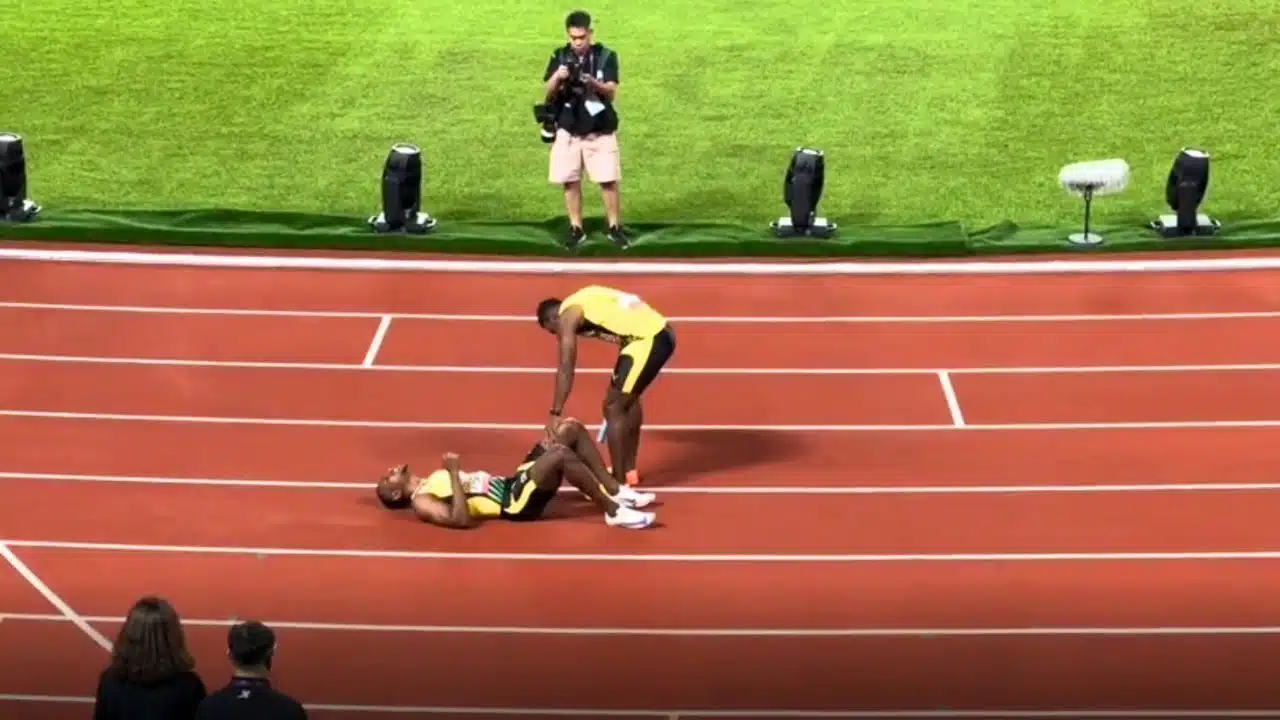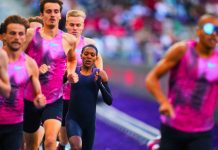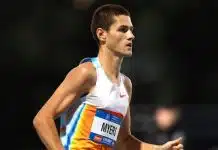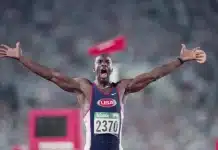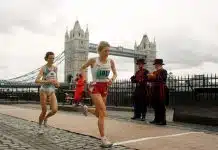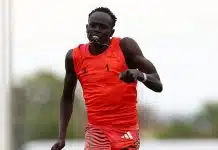On hearing of the death of Lady Macbeth and faced with his own impending overthrow, Shakespeare’s Macbeth tries to make sense of it all. Life, he concludes, is “a tale told by an idiot, full of sound and fury, signifying nothing.”
Could have been talking about the World Relays.
In the moment, Macbeth, the king of Scotland, is not feared for his own mortality. Not yet, anyway: Macbeth is buoyed by the third of the prophesies with which the three witches egged him on to murder his predecessor and seize power. “No man of woman born shall harm Macbeth.” Seems pretty watertight, but the logic comes unstuck as Macduff informs Macbeth he was “from my mother’s womb untimely ripped.” A premature birth then, reliant on outside intervention.
Which left Macbeth without a leg to stand on, just like Kishane Thompson at the world relays waiting in vain at the last change for a baton which never came. Jamaica’s second runner in the men’s 4×100 qualifying round, Julian Forte, collapsed near the finish of his back-straight leg with a hamstring injury, unable to complete the pass to Yohan Blake which left Thompson stranded. Strangely the same fate had befallen Thompson in the heats, though this time without the explaining factor of injury.
Notionally, at least, Thompson was the fastest man running the 4×100 in Guangzhou. An Olympic silver medallist on the final leg is a priceless asset, but not if the baton never gets to him. You can be DQed or DNF once in the world relays, but even under the relaxed rules which allow that scenario – and enabled the USA men’s 4×400 to qualify for the Olympics last year and the world championships this year – you cannot do it twice.

And with 14 teams – the eight finalists and top six from the second qualifying round – clinching places in the world championships in Tokyo later this year, the Jamaican men will now have to rely on grab one of the two places still left open on fastest times. The Jamaica and US clause, as one wag in our group chat called it.
To summarise to this point then, it seems that the point of the world relays is, or has become, not to win but to qualify for the next global championships, be it the Olympic Games or the full world championships. This wasn’t the case for the first edition in the Bahamas back in 2014 but by the time of the second, also in the Bahamas the following year, the first eight in the world relay (the finalists) qualified for the Rio Olympics.
By Yokohama 2019, two things had happened (three, if you count the fact that the relays had moved from their ‘permanent’ Bahamas home). First, the event had moved to a two-year cycle; second, the number qualifying to the next global titles had increased from eight to 10 (the finalists plus the next two best). Almost immediately, of course, Covid disrupted the orderly two-year cycle.
And now, we have no fewer than 14 of the teams for Tokyo25 being determined at the relays. This is all well and good, but not without drawbacks, which we will get too shortly.
Over time, too, the scope of the event has already grown and now been refined back to just the 4×100 and 4×400 distances contested at the Olympics and worlds. Guangzhou25 brought the introduction of a mixed 4×100, but that was a prelude to its addition to the Olympic program in Los Angeles28. So, it’s 4×100 men, women and mixed and the same for 4×400.
The initial concept was more along the lines of US relays like Penn and Drake. In 2014, the world relays started with 4×100, 4×200, 4×400, 4×800 and 4×1500. The latter lasted just one edition, replaced in 2015 by a distance medley relay – legs of 1200, 400, 800 and 1600. The DMR proved as short-lived as the 4×1500, lasting only one edition. By Yokohama both the 4×800 and 4×1500 had gone, replaced by a mixed 2x2x400 and a 100/110 hurdles shuttle relay, again a mixed relay, two men, two women.
The biggest problem of where the relays are now, however, is that winning has become secondary to qualifying for the Olympics or world championships. Australia took a bronze medal in the mixed 4×400 relay in Guangzhou, for example, gaming the system by running its B-team in each of the men’s and women’s 4×400 heats on day one, and including our two best males – Reece Holder and Cooper Sherman – and best female – Ellie Beer – in the mixed 4×400 heats.
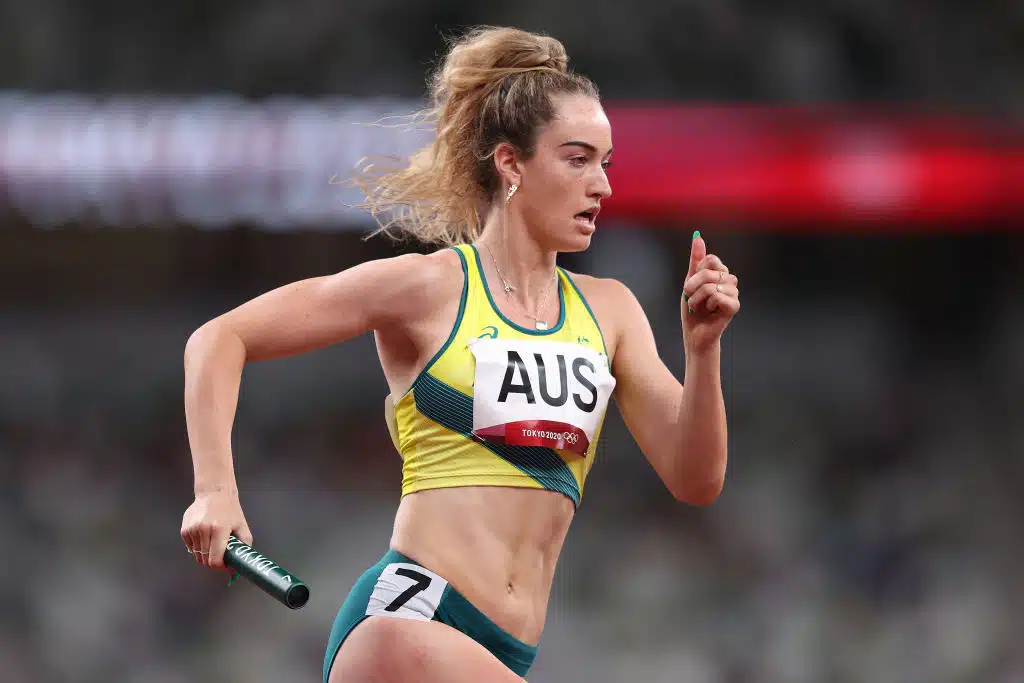
The mixed team qualified for the final, and thus also for Tokyo. So, job done there. Holder, Sherman and Beer then returned to the single gender events on day two, enabling both those teams to likewise qualify for Tokyo from the second round. Fortunately, their replacements – 4×400 heat runners Luke Van Ratingen, Tom Reynolds and Carla Bull – were good enough to help the mixed team to a medal.
No criticism of Australia, who merely joined a list of countries taking advantage of the qualifying system to ensure they guaranteed as many of their relays as possible a start in Tokyo. The problem is you then have several teams making finals and then running their ‘slower’ runners as they use their best athletes to qualify the ‘other’ relay. Championships are supposed to be about the best racing against the best.
Added to this is the absence of big names. Some of the best-known world stars did compete in Guangzhou, equally as many did not, including some who will be the main men or women at the world championships. That standards are slipping is evident from the records, the mixed relays, ‘new’ events after all, excepted. Three of the four championship records in the 4×100 and 4×400 go back to the first two editions. The one exception is the women’s 4×100 which was set at the 2024 relays.
Guangzhou25 was entertaining to watch – relays always are. The outcomes for Australia were very pleasing. Nor is it realistic to expect the world’s top sprinters to be all guns blazing at this time of the year. But a world championship should be an end, not just a means to qualify for something else. Otherwise, what does it signify.


